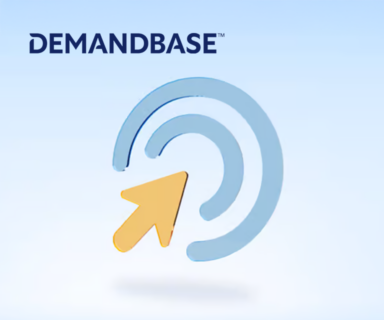 2016. A new year (and a happy one to you!). Time to start fresh, look ahead, and keep those resolutions you’ve set (or at least attempt to). It’s funny how overnight people’s mindsets change on how they plan to live out the year (or the rest of their life)—a lot of the time it’s self-motivated thinking; but by no means do advertisers and marketers miss out on the opportunity to capitalize on that shift in mindset and those goals set. Advertisement after advertisement and commercial after commercial tell us:
2016. A new year (and a happy one to you!). Time to start fresh, look ahead, and keep those resolutions you’ve set (or at least attempt to). It’s funny how overnight people’s mindsets change on how they plan to live out the year (or the rest of their life)—a lot of the time it’s self-motivated thinking; but by no means do advertisers and marketers miss out on the opportunity to capitalize on that shift in mindset and those goals set. Advertisement after advertisement and commercial after commercial tell us:
- Why we should change
- Why we should change now
- And what is going to help make that change possible
Sound familiar? Why are these three tactics constantly being used by marketers and advertisers to effectively promote and sell their product and service?
Because it works!
And just like the health clubs’ pamphlets, anti-smoking campaigns’ billboards, weight loss products’ commercials, etc., your company’s content should do the same.
No matter your company’s product/service, a prospect is looking for information on just those three key things as he progresses on the research journey. By spoon-feeding him these aha-moments, you’ll effectively nurture and influence him through the process and allow for your company’s solution to be seen as the one for him and his organization. And if you don’t, your competitors will!
It’s relatively simple for you and even simpler for your prospect when he has exactly the information he needs. So go on, add one more resolution to the list (that is, if you’re at all involved in your company’s content-creation/content-marketing strategy):
In 2016, I will become a more effective content marketer and strengthen our messaging by giving the researcher information on the three things s/he cares most about.
3 ways your marketing content will influence your prospects
Why change? Why now? What will help make that change possible?
Why the why?
 Most of the time, researchers do not realize that they should be looking at a different solution set or at a different vendor when they’re trying to solve a pain point. It’s easy for them to be creatures of habit and go to the vendor that they’ve previously worked with or have previously come across—even if it’s not their best option!
Most of the time, researchers do not realize that they should be looking at a different solution set or at a different vendor when they’re trying to solve a pain point. It’s easy for them to be creatures of habit and go to the vendor that they’ve previously worked with or have previously come across—even if it’s not their best option!
Challenge their way of thinking… Break those habits. This is where your content should create the first aha-moment for the researcher. Don’t mention your company’s product/service. Instead, get them to realize that there is a problem or pain that exists within their organization that can be fixed or eased. Early-stage messaging that speaks to these common pains, draws from industry insights and experts, and shows the researcher that he is not alone in experiencing this problem, will allow for him to recognize and self-diagnose the pain(s) at hand, hopefully realizing along the way that they do not and should not be the status quo. Sell the problem.
Why the now?
Urgency promotes action. And you want action. Messaging that spotlights the researcher’s recent discovery of the challenge (the why) and moves it to the top of the priority list is what will allow for him to realize that this is no longer an issue that can be put off. Whether it’s risk-driven, cost-driven, or simply ease-of-use-driven, your content’s messaging should clearly spell out the benefits of the product/service and explicitly indicate the repercussions of doing nothing about the issue. This is where that second aha-moment happens. This is where you still draw on the pain point(s) but incorporate more information and data on your organization’s solution. Sell the urgency.
action. And you want action. Messaging that spotlights the researcher’s recent discovery of the challenge (the why) and moves it to the top of the priority list is what will allow for him to realize that this is no longer an issue that can be put off. Whether it’s risk-driven, cost-driven, or simply ease-of-use-driven, your content’s messaging should clearly spell out the benefits of the product/service and explicitly indicate the repercussions of doing nothing about the issue. This is where that second aha-moment happens. This is where you still draw on the pain point(s) but incorporate more information and data on your organization’s solution. Sell the urgency.
Why the what?
 Two aha-moments down and you’ve still got one to go before that researcher finds everything he’s looking for. And this third one is very important if you want a chance to make that short list. You’ve already effectively created a need and urgency around that need—now your content needs to prove why you’re the vendor to solve it.
Two aha-moments down and you’ve still got one to go before that researcher finds everything he’s looking for. And this third one is very important if you want a chance to make that short list. You’ve already effectively created a need and urgency around that need—now your content needs to prove why you’re the vendor to solve it.
As your sales team (and I’m sure a lot of the product-focused content) can certainly explain, there are so many benefits to what your company’s product/service offers and what makes it different. However, value (and let’s be honest, a well-known brand) is often a go-to for a researcher in the evaluation process or making a decision. So make business value as easy to identify as possible. By speaking to, and quantifying how your organization’s solution can boost productivity, alleviate risks, allow for cost-savings, etc., the researcher now has strong reason to believe that this is exactly what he and his company needs. Yes, product-focused content is still necessary to have in the mix—but from a strategic messaging perspective, this is what gets the third aha. And this is how you sell the solution.
Simple, right? It really is. Why—sell the problem. Now—sell the urgency. What—sell the solution. Cover these three things and make an unbreakable resolution for your content marketing strategy. I am interested in hearing what type of resolutions you are making regarding your content efforts over the next year. Feel free to leave a comment or connect with me on LinkedIn.




